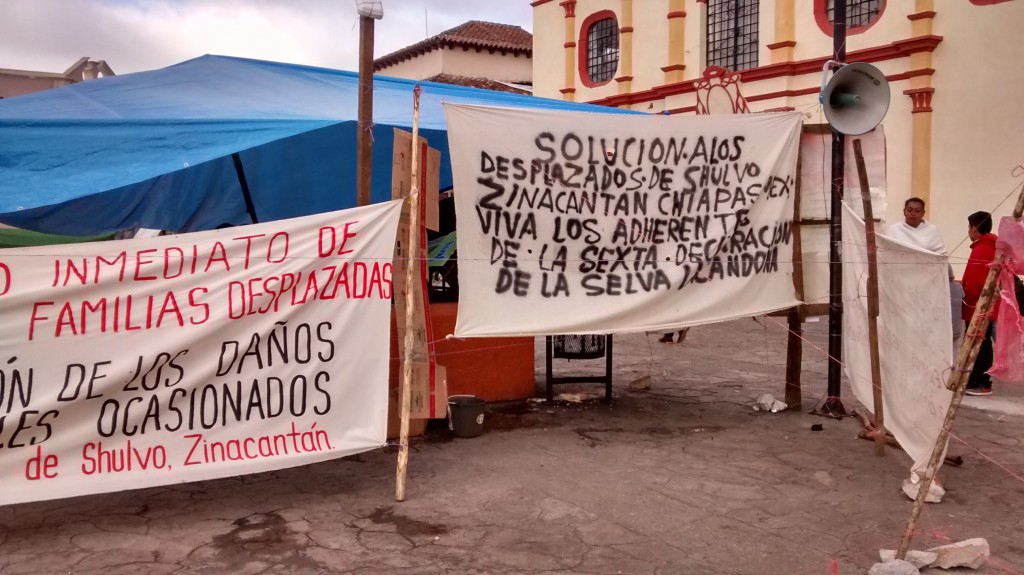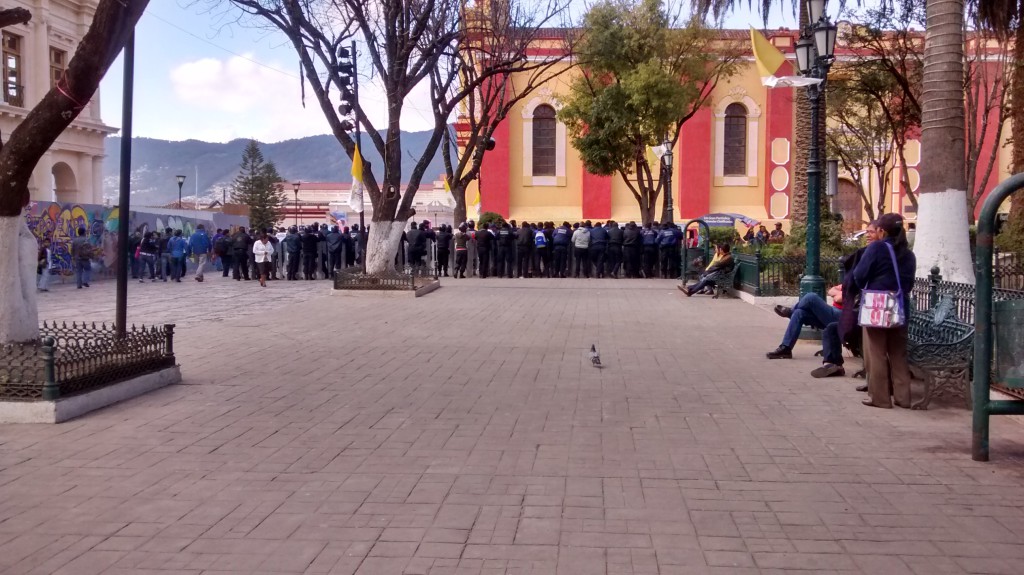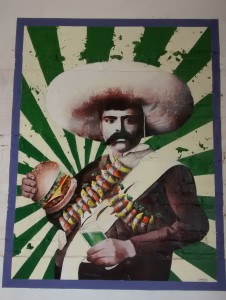Neurotica Ayuda Mutua uses the First World Problem meme to advertise their group therapy sessions for those suffering from solitude, depression, anxiety, jealousy, and other “neuroses”.
Not sure it was the social commentary they were going for!
Having been a vegan for 21 years and vegetarian for 24, I’m thinking that this blog could be a fun place to compile some of the fallacies I come across time and again. Less of the “where do you get your protein?”, more of the pseudo-well-thought-out commentary from those who agree that factory farming is wrong but hold that rejecting all animal agriculture is throwing the baby out with the bathwater.
In a friendly conversation a few days ago, a comment came up about the supposed idiosyncrasy of vegans who eat potato chips. The commenter was amused by what he deemed to be a contradiction. Of course, there is no contradiction because veganism is not about health. It’s about deciding that animals’ lives are not ours to take and that their bodies are not food.
I’ve lived on a farm with cows. I’ve seen a piglet being chased by three men while s/he shrieked in frenzied panic. I’ve witnessed a goat get her or his head cut off while the body continued to shake violently. I feel empathy for cows, pigs, and goats, and hence I don’t think they should suffer cruelty. Whether or not I decide to put a donut in my body is neither here nor there. It’s as simple as when a Westerner sees a dog crying in a car and thinks that the dog shouldn’t suffer cruelty. The fact that the Westerner wouldn’t make a dog into a meal doesn’t lead to reflections on their potato chip habit, and my choice of leaving animals off of my plate is no less straightforward.
Some would retort that humans are animals, therefore if vegans care about animals they should also care about their own health. Again, the problem here is in taking a straightforward connection between our empathy for another and our treatment of them, and making the issue into something larger and more abstract. There’s nothing wrong with including oneself in one’s circle of compassion, in fact it’s beautiful. But to expect that compassion for farm animals must necessarily be part of an entirely different sort of lifestyle is to maintain the line between farm animals and other animals that is the problem to begin with.
Kindness – or lack of cruelty – to a dog, a human, or an injured wild animal is judged on its own instead of being a starting point to comb through a person’s lifestyle and find inconsistencies in how they treat themselves as a fellow animal or human. By jumping to a different framework when our empathy is directed towards a farm animal, we muddle the issue and keep a psychological distance with their suffering.
While the potato chip critique is flawed, the more important point is that people frequently try to point to some proof of inconsistency, incongruity or hypocrisy on the part of vegans. In always making comments about vegans, they steer the conversation away from veganism. The questions hovering in the air are always the same – is it ok to kill and eat a sentient being? Why do to a pig what you would never do to a dog?
Ad hominem arguments against vegans protect the status quo by helping people avoid to even engage on the issue. Whether they’re dispensed with affection or aggression, they serve to detract from questions that are difficult to answer, to protect social norms that don’t hold water.
As vegans, we tend to bite at logical fallacies and follow people down the rabbit holes of irrelevant topics. We go on the defensive, write about why eating potato chips does not make us hypocrites, why we are not actually preachy or crazy or too green or not green enough. Even if we were all these things, what bearing does it have on the animals being slaughtered? It’s about them, not about us.
When you are faced with a cow about to have her throat slit, what difference does it make that a vegan somewhere is smoking a cigarette? At that moment, the relevant question is the one posed by veganism: what entitlement do we have to kill an animal who, just like our dogs at home, feels love, joy, pain and terror?
Big day today! The pope is in San Cristobal and will be giving mass here, then in a sports stadium outside the city, and finally in Tuxtla. I’ve been having difficulty using Twitter so here are a few pictures.
For the past couple weeks, people from autonomous communities had been camping out in front of the cathedral to bring attention to their requests.


Police in the Zocalo on Saturday, preparing to kick out the remaining campers.
Indigenous women selling their products to the police.
Prohibited objects at the entrance of San Cristobal. El San Franciscan thinks some lucky selfie stick salesman has an in with the local government.
A warm welcome by Coca Cola FEMSA. If I weren’t here studying milk I would be studying soda. At the risk of being flippant – genocide is ongoing and it tastes like sugar.
Get your minion in time for mass!
I was told that wearing one of these T-shirts would get me into mass for free.
 I met a vegan couple, one of them from Mexico and the other from the US, at Te Quiero Verde, a vegetarian restaurant with this awesome mural. The American has been involved in animal rights and other activism since the 90s. Upon hearing about my project, he told me the following story about the effects of food aid in Haiti, where he worked for several years.
I met a vegan couple, one of them from Mexico and the other from the US, at Te Quiero Verde, a vegetarian restaurant with this awesome mural. The American has been involved in animal rights and other activism since the 90s. Upon hearing about my project, he told me the following story about the effects of food aid in Haiti, where he worked for several years.
In the middle of the last century, Haiti produced and consumed its own rice. At some point, it even exported rice as aid. And then, following a natural disaster, it started being flooded with American rice, which killed off local rice production as Haitian farmers couldn’t compete. The American rice was milled white rice with little nutritional value, while Haitian rice was brown. The effect of killing off local production was therefore not only economic but directly nutritional as well. And thus, in supposedly addressing a problem another one was created, leaving Haitians more in need of measures to address malnutrition.
Food aid can not be thought of in disjunction from the economic system in which it takes place. As critics have long pointed out, it has often been built on a donor-based logic, which means that the primary function of food aid is to fulfill the needs of donors – for example rice or milk producers – as opposed to the needs of the recipients. As expected however, rhetoric around food aid focuses on the recipients – their starvation, their malnutrition, their poverty. It is portrayed as a generous donation to address a pressing need in the recipient population.
Part of my work here is to look at the effects of food aid – in changing local markets, one also changes local food cultures. But analyzing the effects of aid also involves taking a critical eye to the narrative of lack. Is it real? Is it created? Is it being effectively addressed through aid? Is it the result of a larger systemic issue? If so, how does aid fit into the factors that created the need?
In the case of Haiti, aid wiped out an important source of nutrition and replaced it with empty calories. At some point in the cycle, the lost nutrients will need to be recuperated, perhaps with more aid. Where malnutrition exists it has a story and a cause, yet the marketing of aid is predicated on the implicit notion that malnutrition, hunger or poverty are default states.
When thinking about the distribution of milk to children, it’s interesting to take stock of the other foods that make up, or could make up, their diets. The idea that milk is an essential source of calcium is for many an almost unshakable truth – vegans who claim they get their calcium from almonds or broccoli are often met with doubtful looks. The same belief exists in Mexico. My conversations with women have yielded that they are exposed to the constant message – from medical professionals and commercials – that milk is a necessary source of calcium for them and their children.
Ironically, the basis itself of Mexican food is the tortilla, which is traditionally highly rich in calcium. For thousands of years, tortillas have been made with a process called nixtamalization, whereby the grains of corn are soaked in a lye solution for an entire day. The corn is then rinsed and ground and tortillas are made with the resulting wet mass. Nixtamilization drastically improves the nutritional profile of corn in several ways, among which, by adding calcium. In recent decades, traditional tortillerias have been mostly replaced by those selling Maseca tortillas, a brand owned by the large Mexican multinational Gruma. The move from an artesanal to an industrial process has resulted in a tortilla that is less calcium-rich. (Of course, people have also started consuming large amounts of other products churned out by Big Ag – coke, sabritas, etc – none of them nutritionally dense).
An approach that would truly benefit recipients would be to nurture and build on the existent basis – and the basis here is extremely rich. The state of Chiapas actually gets its name from the chia seed, another calcium powerhouse. An abundance of greens have also traditionally been grown in milpas and harvested in the wild, but their consumption is declining.* While milk and other industrial foods are ushered into marginal communities as food aid, traditional food systems are being dismantled by the market forces that create malnourished kids.
It’s worth taking a moment to consider the implications of a narrative that positions milk as essential in a context where it is not traditionally consumed.
Imagine growing up in the West. You’ve rarely, if ever, come across yucca. As an adult, you suddenly start to see it everywhere. It is promoted to the middle-class through commercials and gracefully bestowed on the poor to ensure their health. Medical staff insist that mothers absolutely must feed their children yucca everyday. It would seem that until that moment in history, nothing your family grew or ate for generations, nothing you could find in a store growing up, was nourishment enough to ensure your children would be well-fed.
The promotion of milk is linked to another implicit narrative of lack. Many foods are said to be healthy – some have been even labeled “superfoods”. To position a food as necessary is something else altogether. As milk becomes increasingly central to public health discourse and social assistance programs around the world, it subtly delegitimizes traditional foods as possible sources of nutrition and health. The idea may be unarticulated but clear: before the Spanish brought their cows and culture, there was no way for children in Chiapas to have strong bones and develop healthily. Luckily for them, Nestlé, Lala and others continue their benevolent crusade.
*This was the recent topic of the Masters thesis of an acquaintance, I’ll devote another post to her work.